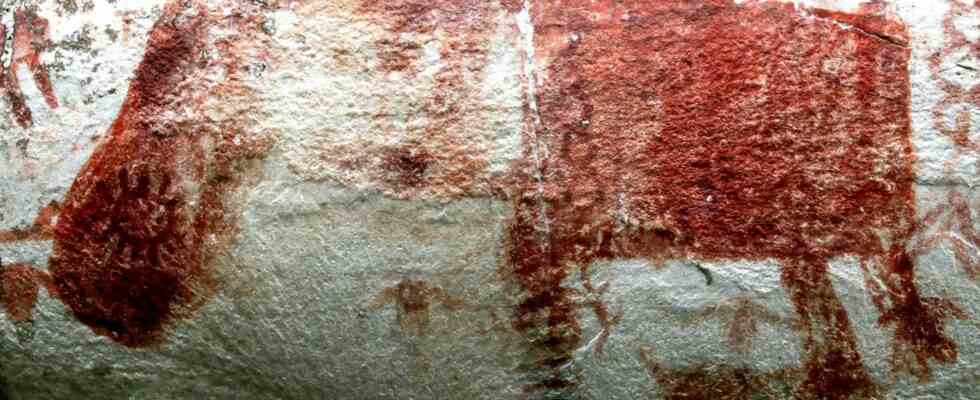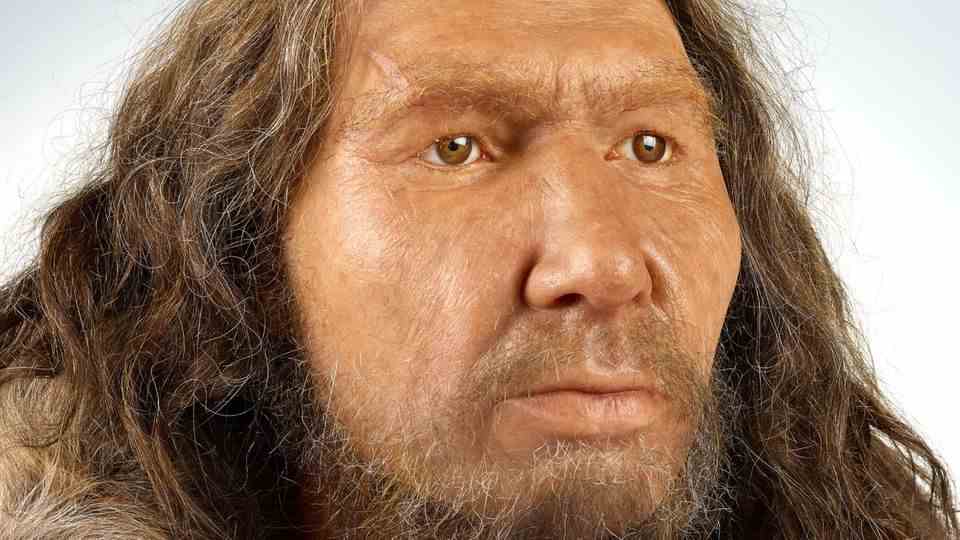Colombia
Controversial rock painting possibly depicts extinct giant beasts from the Ice Age
The interpretation of what exactly scientists discovered with this work of art in Colombia remains controversial
© Juancho Torres / Picture Alliance
Countless rock paintings discovered by archaeologists in Colombia, preliminary analysis may show giant animals that lived in South America around 12,000 years ago.
More than 12,000 years ago, South America was said to be teeming with large Ice Age animals – giant ground sloths, for example, or deer-like animals with elongated snouts. These extinct giants are also among the many depicted creatures immortalized in a 13-kilometer chain of rock art in the Serranía de la Lindosa in the Colombian Amazon rainforest. It was created by people living in the Amazon rainforest at the time, according to a study published in the journal Philosophical Transactions.
Images of ‘big-bodied mammals’ discovered in Colombia
“(The images) show the full diversity of Amazonia. From turtles and fish to jaguars, monkeys and porcupines,” study author José Iriarte, a professor at the Department of Archeology at the University of Exeter in England, told CNN. Iriate calls the artwork, which was likely painted over centuries, “the last voyage” as it reflects the arrival of humans in South America – the last region to be inhabited by Homo sapiens.
“They encountered these big-bodied mammals and probably painted them. And although we can’t be sure, these paintings are very naturalistic and we can see morphological features of the animals,” Iriate added.

But the interpretation of exactly what scientists discovered remains controversial. For example, some archaeologists believe that the exceptional preservation of the paintings suggests a much more recent origin and that there are other plausible interpretations for the creatures depicted, summarizes CNN.
Giant sloth versus capybara
For example, the giant sloth identified by Iriarte and his colleagues may actually be a capybara — a large rodent still common in the region today.
While Iriarte admits that the new study will certainly not be the last word in this debate, he is nonetheless confident that he and his research team have found evidence of early human encounters with some of the vanished giants of the past. A further extensive examination of the paintings should now provide information as to why the giant animals that were undoubtedly present in the past have become extinct.
Speaking to CNN, Iriarte added that archaeological digs in the immediate area have not found any bones of the extinct creatures – suggesting they may not have been a source of sustenance for the people who created the art.
Swell: CNN, “Philosophical Transactions”



